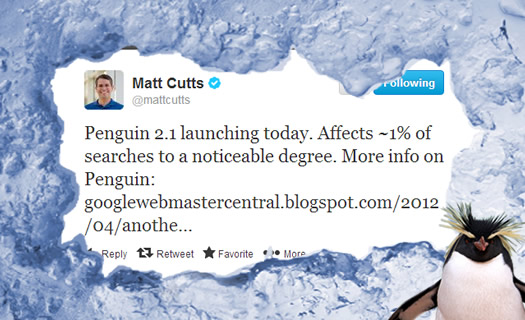
On Friday, October 4th at 4:50PM, Matt Cutts announced that Penguin 2.1 was rolling out. It was shortly after reading that update that I tweeted we could be in for an icy weekend (as the latest update would surely take out more websites). But on the flip side, a new update also meant that more companies could recover from previous Penguin updates. Needless to say, I was eager to begin analyzing the impact of our cute, black and white friend.
If you have you followed my blog over the past few years, then you know I do a lot of Penguin work. So it should be no surprise that I’ve dug into Penguin 2.1 victims to determine new findings, insights, etc. I fired up my computer at 5:30AM on Saturday morning and started digging in. Since then, I have analyzed eleven websites (update: now 26 sites) hit by Penguin 2.1 and have provided my findings below.
Note, since this was a minor update (2.1), it signals that the core Penguin algorithm hasn’t been updated since 2.0, but that the data has been refreshed. Let’s cover what I found during my research.
Fresh Dates, Fresh Spam
While analyzing sites hit by Penguin 2.1, I wanted to check the creation dates for the unnatural links I was coming across. For most of the sites, the links were first found in late spring 2013, and many were found during the summer. That makes complete sense, since the sites in question weren’t hit by Penguin 2.0 on May 22. Instead, they were hit with this latest Penguin update on October 4, 2013. So, it does seem like fresher unnatural link data is being used.
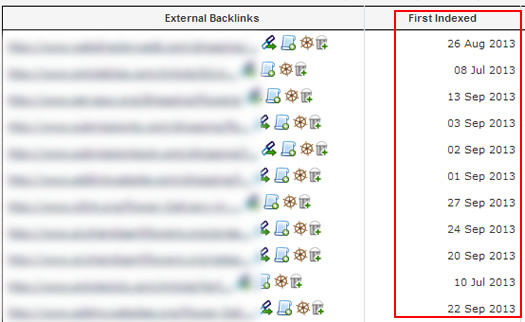
Categories of Unnatural Links Targeted
Since Penguin 2.1 launched, many people have been asking me if the unnatural link footprint has changed since previous Penguin updates. For example, what types of unnatural links are showing up (for the sites that have been hit by Penguin 2.1). I have listed my latest findings below (and yes, some familiar unnatural link types showed up):
- Forum Spam
I have seen forum spam targeted before, but I saw it heavily targeted with this update. For example, comments in forum threads that used exact match anchor text links pointing to websites trying to game the system. During my latest analyses, I saw a lot of forum spam mixed with forum bio spam, which is covered next. - Forum Bio Spam
During my research, I saw forum bios filled with exact match anchor text pointing at sites hit by Penguin 2.1. This is where the “linkbuilder” set up a profile on a forum, only to use that profile to gain exact match anchor text links to the target website. I also saw bios targeting multiple websites with exact match anchor text. This was obviously an attempt to maximize the forum bio to help multiple sites rank. More about multiple sites soon. - Do-Follow Blogs
I have seen links from various resources that identify do-follow blogs. A do-follow blog is one that doesn’t add nofollow to links posted (even blog comment signatures in some cases). The do-follow blog resources are problematic on several levels. First, they act like a directory using exact match anchor text linking to do-follow blogs. Second, they absolutely flag certain blogs as being a resource for rich anchor text links (which can send Google down an icy path).Let’s face it, being listed on do-follow resource sites can absolutely send Google a signal that you are trying to game links. Also, simply finding do-follow blogs and dropping links is not linkbuilding. If you are doing this, and you got hit by Penguin 2.1, then remove those links as soon as possible.
- Blogroll Spam
OK, an old friend shows up in the list… Just like with Penguin 1.0 and 2.0, spammy blogroll links showed up on sites hit by Penguin 2.1. This shouldn’t be a shock to anyone involved in SEO, but should reinforce that blogrolls can be extremely problematic when they are on the wrong sites.I believe John Mueller from Google is on record saying that blogrolls overall aren’t bad, but it’s how they are used that can trigger a problem. I’ve always believed the same thing. If you have many blogroll links from questionable sites, then I highly recommend attacking them (nuking them, nofollowing them, or disavowing them). But again, some may be fine. If you are unsure which ones are bad versus good, ask for help from a seasoned SEO. - Spammy Directories
Another old Penguin friend showed up during my research. Similar to what I explained above with blogroll spam, certain directories are absolutely Penguin food. If you have used this tactic in the past, and still have links out there in spammy directories, then nuke them, have them nofollowed, or disavow them. I’ve seen this category of links show up so many times during my research across Penguin updates, it’s not even funny. Beware.In addition, I found several sites with millions of inbound links, and many of those were across spammy directories. Let me tell you… if you want to flag your own site, go ahead and build over 2M inbound links from spammy directories. You’ll get a knock on the door from Mr. Penguin. That’s for sure.
- Blog Comment Signature Spam
I came across numerous instances of blog signatures using exact match or rich anchor text. What’s interesting is that Google seems to target these links, even when they aren’t followed links (most blogs nofollow signature links, and I saw this was the case during my research of sites that were hit by Penguin 2.1). So, it seems if you were using exact match anchor text as your blog comment signature, then it could be targeted by Penguin (even when those links are nofollowed). - (Update) Classified Ads Spam
As I analyzed more sites hit by Penguin 2.1, I saw low-quality classified websites show up with links pointing at destination sites. Classified ad listings were used to drop exact match anchor text links, and sometimes in great volume. For some sites I was analyzing, there were hundreds of pages showing from each domain with links to their websites (from the classified ad websites). I’ve analyzed many sites hit by Penguin (historically), and haven’t come across many classified websites showing up in the various link profiles. But with 2.1, I saw this a number of times.
“Linking” Victims Together Via Shared Tactics
One interesting finding I picked up during my analyses was the lumping together of victims. I noticed forum comment spam and forum bio spam that contained multiple sets of exact match anchor text links (to two different sites). That even helped me find more Penguin 2.1 victims… as I didn’t know about the second site being hit by Penguin until I found the first one during my research.
So, I’m wondering if Google was able to identify additional targets since they were associated with initial targets. This would be a brilliant approach for situations where multiple sites were targeted via unnatural links. It would be a solid example of Google targeting like-minded linkbuilders via evidence it picks up during its crawls. I can’t say for sure if the other sites would have been targeted anyway by Penguin 2.1, but I saw this numerous times during my latest research of Penguin 2.1.
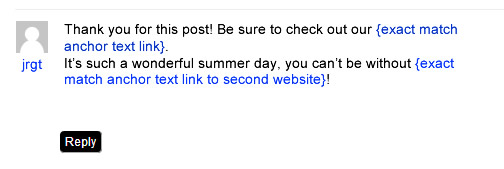
Deeper Pages Targeted, P2.0-style
Content-wise, deeper pages were targeted by Penguin 2.1, just like Penguin 2.0. And since this is a minor update of 2.0, then that makes complete sense. I’m referring to the target pages of unnatural links on sites hit by Penguin 2.1. In case you aren’t familiar with what I’m referring to, Penguin 1.0 targeted links to the homepage of a website, where Penguin 2.0 targeted links to any page on the website.
When Matt Cutts first explained this after Penguin 2.0 launched on May 22, it made complete sense to me. That’s because I had Penguin 1.0 victims ask me why their competitors also weren’t targeted initially by Penguin. It ends up their competitors had targeted many pages within their own sites versus just driving unnatural links to their homepages. But in true Google algo fashion, those additional, deeper pages were eventually targeted. And many sites got hit by Penguin 2.0 (and now 2.1).
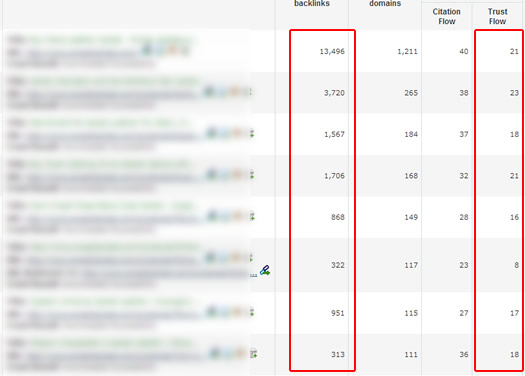
How To Recover:
My advice has not changed since Penguin 1.0. If you have been hit by Penguin, then you need to take the following steps. And you need to be aggressive with your approach. If you put band-aids on your Penguin situation, then you might not remove enough links to recover. And if that’s the case, then you can sit in the gray area of Penguin, never knowing how close you are to recovery.
- Download Your Links – Download all of your links from multiple sources, including Google Webmaster Tools, Majestic, Open Site Explorer, etc.
- Analyze Your Links – Analyze and organize your links. Identify which ones are unnatural and flag them in your spreadsheets for removal.
- Attack the Links – Form a plan for removing unnatural links. I always recommend removing as many as you can manually, and then disavowing the remaining links.
- Removal of Pages is OK – You can also remove pages from your site that are the target pages of spammy links. John Mueller from Google confirmed that removing pages is the same as removing the links. Of course, if those are important pages, then you can’t remove them (like your homepage!)
- Head Down, Keep Driving Forward – Once you have completed your link cleanup, then you’ll need to wait for another Penguin update. Note, I have seen several Penguin recoveries during Panda updates, so that’s always a possibility.
Summary – Dealing With Penguin 2.1
That’s what I have for now. I will continue to analyze more sites hit by Penguin 2.1 and will try and write follow-up posts, based on my findings. If you have been hit, you need to move aggressively to fix the problem. Be thorough, be aggressive, and move quickly. That’s the best way to recover from Penguin. Good luck.
GG
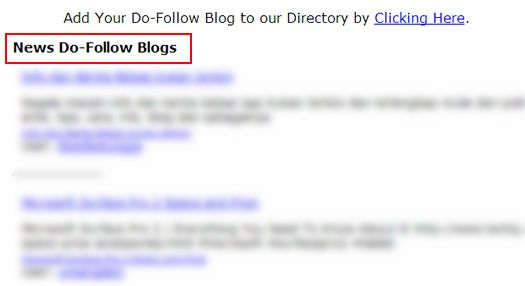

Thank you Glenn Gabe for this usefull article and your expertise in that subject. Which program you are using to analyse your backlings? If I understood you right to write an article on a blog as guest is discovered as spam. Is this right? Many regards, Elke Greim, Germany.
Thanks Ellke. I use a number of tools when analyzing backlinks. The screenshot above is from Majestic SEO, but I also use Open Site Explorer. And don’t forget about Google Webmaster Tools, which provides links directly from Google. :)
Regarding guest posts, it’s all about how, and where, the guest posts are published. If someone is writing low-quality posts for the purpose of adding exact match anchor text links back to their website(s), then that could be very problematic. Guest posts on established websites, with the right intention, are totally fine. I hope that helps.
Is it okay to have an off-site blog that point links to your website? If so, how many links are allowed in a 500 word article (roughly)?
I would be very careful with that approach. I always recommend having your blog on your website (for multiple reasons). One being that any links you build to the blog will help the domain. If your blog is on another domain, your core site needs to be build its strength on its own.
Linkbuilding-wise, it’s extremely easy for Google and Bing to see that you own the second domain, and that many links are coming from that domain (and possibly with exact match or partial match anchor text). Since you own the blog (and the core website), those links aren’t “natural”. So, in aggregate, that could be very problematic. It’s hard for me to say without seeing the actual situation. I hope that helps.
Hi Glenn,
There are still many companies paying online marketing companies to promote their brands with old fashioned article submission etc, are they harming themselves?
Regards
Piyush
Yes, they are probably hurting themselves by doing so. But the devil is the in the details. I would have to see their articles to know how bad the situation is.
That said, many companies use article marketing for the sole purpose of gaining exact match anchor text links (via the articles and the bios). I’ve seen so many of those links during Penguin research, it’s not even funny. I highly recommend not going down that path. The links are unnatural, and are often Penguin food. I hope that helps.
What about having Tier 1 as Web 2.0’s with unique content, Tier 2 as articles with readable spun content and Tier 3 as pure spam?
Thanks.
I have a site with over 400,000 backlinks as per GWT. What would be the best way to get all the links? GWT has 100,000 links limit. Majestic SEO gives a max of 200,000 with 60% overlap with GWT. For some reason OSE shows only 20,000 links for my site. So yes, I am in bit of a soup with regards to this one. Would love to hear any suggestion you may have.
Thanks!
I recommend downloading all links from GWT (sample and latest), all from Majestic (which doesn’t limit you to 200K), and then OSE as well. I’m not sure why you are running into the 200K max limit with Majestic. Which plan do you have?
Then you need to begin analyzing and organizing your links. I hope that helps.
Great post Glenn.
In your opinion, what’s the potential for relatively non-spammy backlink profiles to be affected?
For example, there’s been a lot of talk about info-graphics, widgets, and press releases. Any concern for those who use these outreach methods (and others like relevant, quality forum-posting, niche do-follow directories, quality do-follow guest posting, etc…) in a whitehat way to be affected? Do you see certain outreach methods being a lot more risky than others?
Thanks Reid. I’m glad you found my post helpful.
I have yet to see collateral damage Penguin-wise. All of the link profiles I have analyzed (over 275 since Penguin 1.0), have been riddled with unnatural links.
Regarding the tactics you mentioned above, all of those can lead to Penguin hits. The devil is in the details though. It’s all about how those tactics are implemented. Also, I still believe there will an update targeting widgets, infographics, etc. I called that in early spring, and still believe that will happen. Those tactics have been abused heavily by some…
As for the riskiest tactics, spammy directories are probably the easiest for Google to identify right now. But spammy forum and blog posts aren’t far behind. And that’s especially the case when forum bios are abused on top of the actual comments. And then there’s article marketing, which has also been crushed via Penguin. I hope that helps!
Great insights. Thanks Glenn.
I’ve never obsessed too much over link building details. I simply ask 2 questions and if the answers are “yes” then I go on my way.
1) Does the link add value to the web/user experience? 2)Is there a chance real people would click on the link and be glad they did?
But the new updates get you a little paranoid about specifics. Again, thanks.
Glenn, your time spent analyzing the latest algo update is greatly appreciated, well researched and helpful to your readers, including me.
In your final point you said,”Once you have completed your link cleanup, then you’ll need to wait for another Penguin update.”
In your experience have you found that the recovery waits until the next full update as an penguin 2.2? I have one website that was hit where the offending link was pretty obvious- a sidebar exact match anchor that got repeated in thousands of update posts. That particular link was actually removed shortly before Penguin 2.1 was “released.” Nevertheless at some point it had already been picked up, indexed and used as your so called “penguin food” and evidently, the “memory” of that link hammered the victim website. I was hoping an interim refresh would soon self-correct the penalty. It’s a tough call to ask a webmaster to wait six months…
Thanks Dave. I’m glad my post was helpful. It sounds like you may have been too late with the link removal! I’m sorry to hear that.
You should definitely read some of my Penguin recovery case studies. You’ll be happy to hear that I have seen Penguin recoveries *during Panda updates* (including some during the Phantom Update on May 8, 2013). I can’t say whether that will occur for your site, but it absolutely could.
Panda now rolls out monthly and takes ~10 days to fully roll out. If you have thoroughly fixed your link situation, I would keep an eye on future Panda updates. You might recover during one of them. I hope that helps.
Hi Glenn
if you like you can analyse my penguin 2.1 effected site?
Sure, you can either post your domain here or you can send me an email. You can visit my contact page and email from there. Thanks.
My site got a revoke in late May a few days after the Penguin update. Now 2.1 is out and there has been a refresh our site totally tanked in the results for anything we still had left.
Have you seen sites that get revoked drop further after a refresh?
All that hard work for nothing. Now what!
I don’t see a day where my site will ever recover.
Gary, I have seen sites get hit by Penguin after having a manual action revoked. I would have to analyze your link profile to see what’s going on. I see you emailed me last night. I’ll respond soon.
Thanks for the above work Glenn. Any thoughts on the possible impact of spun content around backlinks in Penguin 2.1?
Hi Terry. Can you give some examples of what you are referring to? I’ve seen a ton of article marketing spam during my research, which is often duplicate or spun content with exact match anchor text links. But you might be referring to something different. Let me know.
One of the post P2.1 theories around so far Glenn is that spun content, even on a private PR blog network, for example, is attracting a slap from this update. Do you have any thoughts on that?
Terry, I’ve seen a number of tactics hit by Penguin 2.1, but definitely saw an uptick in forum spam and forum bio spam.
That said, if what you are explaining above involves spinning content across a private network, with exact or rich anchor text links to the destination website, then that absolutely could get a site hit by Penguin.
I would have to analyze an example to give you specific feedback, but I have seen similar tactics hammered by Penguin. I hope that helps.
BTW, if you want to email me an example, I can take a quick look. It’s up to you.
So riddle me this, i have a property site, perfect on site, but since the update google is displaying ridiculous pages for queries.
i.e. I had a page, sitename.com/property type-for-rent-location. The page has 1,972 words of highly relevant content about that location and the page title and H1 mirror the most competitive keyword.
This page has been at #2 for close to a year, never wobbled in an update.
Today it has been replaced in results at position 67 for that keyword query by a completely irrelevant page with a URL that has no relevance and 60 words of irrelevant content.
The site is solely linked to by 3rd part property sites in the same location.
This isn’t restricted to one page, this is happening site wide.
In 7 different Google’s there are up to 5 different results for the same query!
Google has completely made a balls of this.
Now what are we supposed to do with this site?
it has gone from literally total domination of this market for areas, locations and specific properties to oblivion for irrelevant pages.
Hi Dan. I’m sorry to hear you were hit by Penguin 2.0. I would need to analyze the site in order to give you accurate feedback, but it sounds like you haven’t removed as many links as needed to recover. I have also seen sites remove/disavow and then not check back… when in fact, there were more unnatural links popping up every week. That could also be problematic. I’m not saying that was the case with your site, but it could be.
Regarding new content, unfortunately that’s not going to trigger a Penguin recovery. Don’t get me wrong, it’s smart to do (as you send strong signals to Google that you are doing the right thing). But, that won’t help when you have many unnatural links pointing at your site. The link situation must be thoroughly taken care of.
I hope that helps.
What did you mean by this quote in an article on http://searchenginewatch.com/article/2299665/Google-Penguin-2.1-Who-Got-Hit? Quote was “classified websites showing up with heavy unnatural links leading to destination websites.”
I’ll be updating my post with more information about that tomorrow. I came across a number of low-quality classified websites that were used to point many unnatural links at destination websites (using exact match anchor text). I hadn’t come across that situation too much before during previous Penguin research, so it was interesting to see. I hope that helps.
Great post Glenn. A few takeaways for me.
Sadly the idea that negative SEO is back – with a vengeance. Treading on eggshells to please Google yourself must surely imply that others could just come and mess it up very easily. Forum and blog roll spam can be sourced very cheaply. $5 for tens of thousands seems the going rate. Having seen the number of sites getting un-natural linking notices for links that competitors made shoot up in the last 6 days is proving how “hair trigger” Google is getting. Might tun into a spam apocalypse with retaliatory strikes.
Given the disavow process after a particularly egregious spamming campaign can take months – finding the contact email addresses on all the linking sites, send the emails (which in itself often requires an outlay – a Gmail account is not going to be happy with 25,000 outgoing mails asking “please will you remove this link”). It seems to take 3-6 months with Google constantly replying that “You haven’t done enough work yourself to warrant us reconsidering the links”.
In cases with newer, smaller sites the advice I’m seeing is “Give up”.. and in the darker recesses of the internet “Spam back”.
Not condoning this, just reporting that this is the feeling and mood.
On the other side of the coin. Your points on 2.1 seem spot on. Penguin working along side Hummingbird has had the effect that some in the industry have (wrongly I think) thought that Panda had run over the weekend. The synergy between onsite content and Google’s own trust metrics – and your offsite linking seems to be growing stronger than ever.
http://goo.gl/b9ouw7
Here’s a report of how three different sites fared in terms of SERPs and traffic after Penguin 2.1. 3 very different websites. One brand new, one pretty big and constantly updated, the last a “static” site.
It came as no surprise to me which one fared the best.
For a link update it sure made content seem more important than ever.
I for one am all for the new changes. It is about time that we finally get rid of all negative back link tactics and back to good content and high quality links. That’s not to say there aren’t good directories out there but hopefully this will get rid of a lot of the bogus directory scams.
One thing is for sure. Penguin will change behavior. If linkbuliding tactics don’t change and improve, Penguin could very well make a visit. And it’s never pleasant when that happens. :)
Really in-depth study of Penguin 2.1. There is one solutions to remove the page having a spam links. It will result into 404 page. What I learned having 404 pages in your site is not good
That’s a common misconception. It’s completely natural to have 404s on your site (if the pages should actually 404). And if you have pages with many unnatural links pointing at them, and you are ok with 404’ing those pages, then that’s a decent path to take.
404s become problematic when the pages shouldn’t actually 404. You can end up losing rankings, search equity, traffic, etc. if that’s the case. And in aggregate (for larger sites), this can be catastrophic. I hope that helps.
Thanks Glenn for making doubt clear
Hi Gabe, thanks for this great penguin analysis. We got hit by 2.0 on April 25, our search stats dropped by about 95%. We were only 3 months live at the time and barely had any links to our site. No improvement with 2.1, it’s impossible to know what to do with each change. The only link back we have is bloggers reviewing our site and press publications (all subject related or mainstream) who have written about us or featured our products.
Thanks Jordan. I’m glad you found my post helpful. Regarding your Penguin hit, 2.0 rolled out on 5/22/13, not 4/25/13. Penguin 1.0 rolled out on 4/24/12, but that was obviously a while ago. If you noticed a large drop on 4/25/13, then I’m pretty confident you weren’t hit by Penguin. I hope that helps.
I was ranking High in the top 10 for a few target keywords. However after this update I am like completely off the map. My webmaster tools shows no warnings, and the links I have are not spam. http://www.oemautoglass.com another site that I had, that previously had a out of control nut doing negative seo to me is ranking on like page 5, it makes no sense that a website with total trash links can rank on page 5, yet a site with no spam targeted to it does not even show..
I’m sorry to hear about your situation Larry. Without analyzing your current site, it’s hard to say what’s going on. But if it was Penguin 2.1, then it’s definitely an unnatural links problem. That’s exactly what Penguin targets, so I would start there. I hope that helps.
Same here, my site is fully out of google now, for last more than 3 years, it was showing in #1 – #5. Any idea what to do? Kindly help if possible.
It’s impossible to say what to do without analyzing your site. Were you hit by Penguin 2.1 on 10/4? If so, I would start by downloading and analyzing all of your inbound links to identify unnatural links. Can you share your domain? If so, it would be easier to understand your situation.
it seems none method of making links works if ur post were right, since u listed all exitsting ones
Well, that is not exactly true. There are more ways to get links…..
Hi Glenn!
I believe that if link-building tactics of some people will not change or maybe improve, then for sure that this new algorithm update, the Penguin will definitely visit their sites.
Yes, you’re right. Penguin 2.1 was bigger and badder than 2.0, and many companies were impacted… But, websites can recover from Penguin. There’s a lot of work to do, but it’s entirely possible. Regarding linkbuilding strategies, webmasters need to change (actually, they needed to change a long time ago). Penguin has been around since 4/24/12, and that was a clear signal that companies needed to change.
In addition, I fully believe Penguin will follow Panda and go quasi real-time. And when it does, we’ll have two algo updates running monthly with no confirmation from Google. Madness will ensue. :)